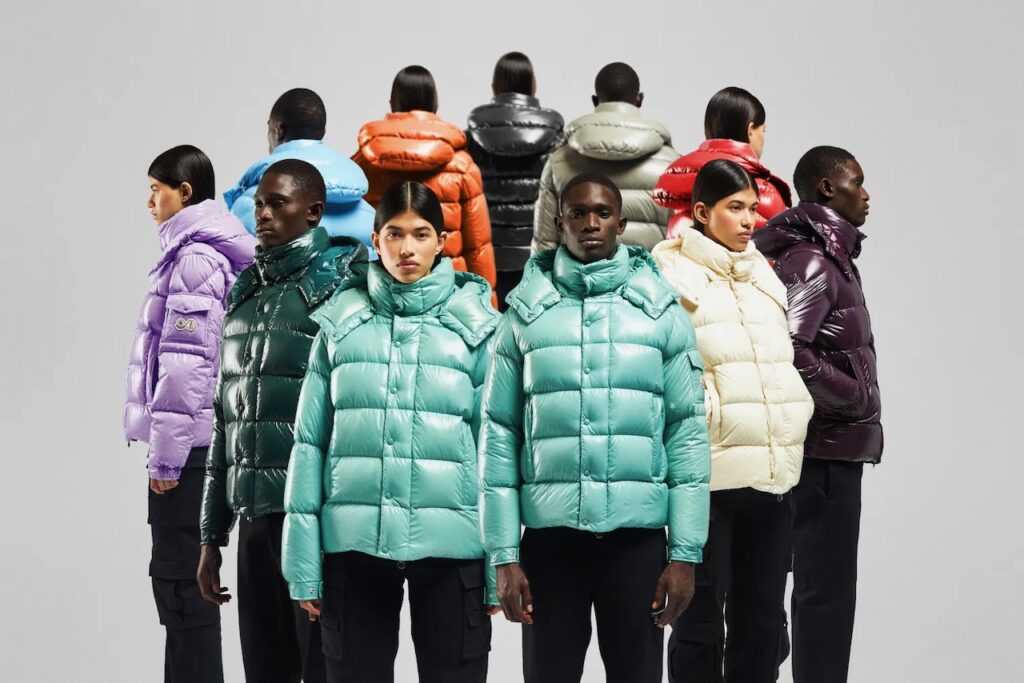Is digital fashion truly the solution to the fashion industry’s inherent sustainability problem? Or is it all talk and no walk?
One of the biggest arguments in favour of digital fashion has been its presumed capacity to solve, or at the very least largely alleviate, the sustainability issue within the fashion industry. Overconsumption, overproduction, waste generation, excessive water usage, environmentally costly production processes/production lines/transportation methods… All side-effects of the fashion industry have taken a disgustingly big toll on the environment. And let’s not even open the lid of pandora’s box when it comes to fast fashion sustainability or lack of rather.
It might be a little unfair on our part to state that all physical fashion is unsustainable. The truth is that brands are increasingly shifting towards sustainable production and design methods. Ready-to-wear garments, upcycling, limiting stock, circularity… Still, while we are optimistic about the direction in which many brands are evolving thanks to consumer demand, sustainability, particularly fast fashion sustainability, continues to pose an issue.
There might, however, be a saviour coming to our rescue on the horizon. In fact, it’s been here for a few years already. Digital fashion.
For many, digital fashion and sustainability go hand in hand. It’s the perfect solution for the sustainability issue in fashion. However, is it really the end-all of environmentally detrimental practices in the industry?
Can digital fashion cut it and make the fashion industry sustainable?
While some might say that the problem at its core lies within society’s view and use of fashion, we believe it’s simply a matter of shifting perspective. It is important to be able to express oneself through our clothes. It’s not frivolous to care about one’s clothes. In fact, it’s important to step into ourselves every time we wear that t-shirt that makes us feel comfortable, cool, and collected.

This is precisely what many believe that digital fashion will fail to live up to, that digital fashion can only help you express yourself via social media. Sceptics say that the tech isn’t quite there yet for anything other than an obviously digitally generated photo on social media that isn’t even passable. Digital fashion can’t live up to the hype and functionality generated by physical clothes. Sure it’s a thing, but it’s a niche, and will never satisfy the global cultural market the way physical clothes do. Looking at a photo on Instagram or checking out a fit on TikTok ain’t the same as walking on the street feeling yourself. So is that it? Is digital fashion not good enough and therefore can’t help do what fashion does best: Make us feel good?
The solution to the problem with the solution
We really can’t help ourselves, can we? Always wanting to run before we walk… Critics may be right, the technology isn’t here… Yet. But it’s getting here fast. Very fast actually. In digital’s fashion short-lived time in mainstream audiences, renders of garments have become a lot more visually satisfying and convincing. Experts believe that a future where we will wear AR glasses and digital fashion will be consumed not just online, but on the streets too.
We are committed to the creation of a new fashion perspective that revolutionises industry systems and makes self-expression through digital clothing a sustainable way to explore personal identity. – The Fabricant
Moreover, as our presence on social media platforms and our digital lives become intertwined with our real lives and become cemented as pillars of our day-to-day, digital fashion and sustainability will become only grow in relevance and importance.
Are digital fashion and sustainability the perfect partners?
It seems rather obvious, doesn’t it? If there’s no actual physical product then the whole ordeal is much more sustainable. Bye-bye landfills overflowing with piles of over-stocked garments that get thrown away because it’s cheaper than storing them or selling them. Is the fashion industry sustainable? No. But it could be. No more buying things for clout then having them collect dust in the corner, no more production processes than span across countries and continents, no more fashion weeks that mobilize tonnes of people around the globe and create collections upon collections that are meant to be strutted about on a runway but not actually worn.
Is digital fashion sustainable? Yes, but it isn’t always.
Is digital fashion sustainable?
While digital fashion might be the solution to the fashion industry’s notorious sustainability problem, let’s not jump to a conclusion and hail it as the industry’s new lord and saviour. Things are, quite frankly, not as simple.

For example yes, digital fashion weeks might in theory have a smaller carbon footprint per attendee, but only if the same amount of attendees went to the digital show than to the real show. If we take into account that a digital fashion week might be attended by countless more people, then the carbon footprint of the event as a whole can far surpass that of the physical event. Such was the case of Helsinki Fashion Week. Did their 2021 exclusively digital Fashion Week carbon footprint drop from 137kg to 0.66kg CO2e per person? Yes, yes it did. But that was merely because of the number of people that attended was significantly larger. Overall the event’s carbon footprint was, in fact, higher than previous physical editions.
We need to keep in mind that simply because we can’t physically see waste generated, does not automatically translate into something being environmentally friendly.
Fashion should waste nothing but data and exploit nothing but the imagination. – The Fabricant
The NFT environmental impact
Possibly the biggest counterclaim against digital fashion’s alleged sustainability is NFT environmental impact. Digital garments for the most part are bought and sold as NFTs with cryptocurrency. It’s been proved that the NFT environmental impact is nothing short of massive. The thing is, it doesn’t actually have to be.
What do we mean by that? Well, what we mean is that most NFTs are part of the Ethereum blockchain. Ethereum, alongside other major cryptocurrencies such as Bitcoin, uses Proof-of-Work to secure transactions and time-stamp every new block. This method uses ridiculous amounts of energy. One single transaction uses the same amount of electricity that could power a U.S. household for 2.5 days.
However, there is a way to reduce the NFT environmental impact, and it’s as simple as switching up the method used to secure transactions from Proof-of-Work to Proof-of-Stake. Cryptocurrencies such as the Flow blockchain and Ethereum 2.0 use it already.

Where there’s a will there’s a way. And we have the way, so where’s the will?
Physical fashion’s unsustainability is a melange of several things. Water, energy, waste, overproduction… etc. However when it comes to digital fashion, the source of unsustainability is centralized, it’s one thing: energy. And this is something we can definitely tackle. We must ensure the processes used are optimized energy-wise, and that solutions focus on efficiency and reduction of carbon footprint, which is a reality already. The option is there, all we have to do is take it.
Digital fashion is an opportunity to redefine business models and build a more sustainable, progressive future. – Natalia Modenova, COO and co-founder of DRESSX













